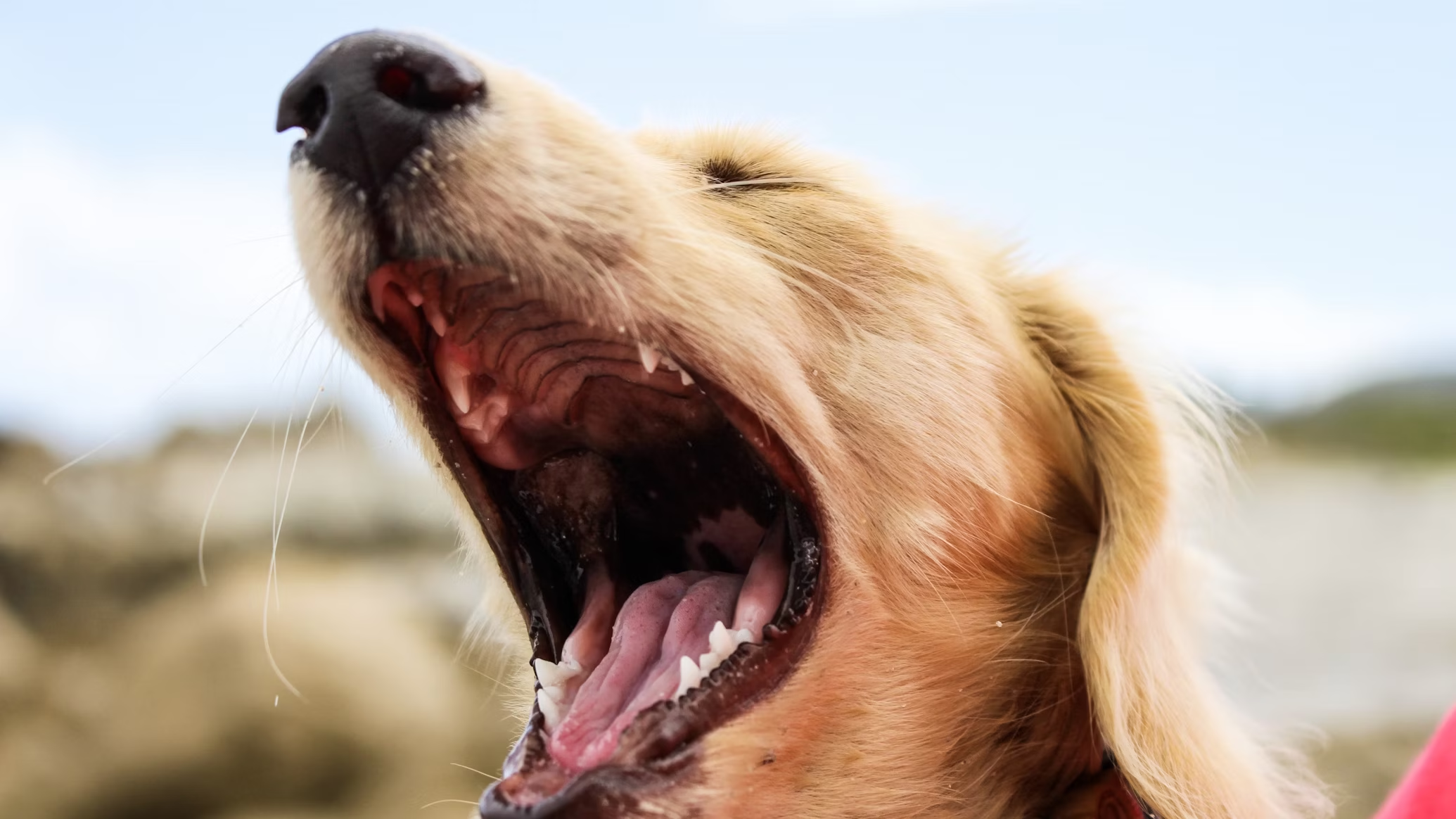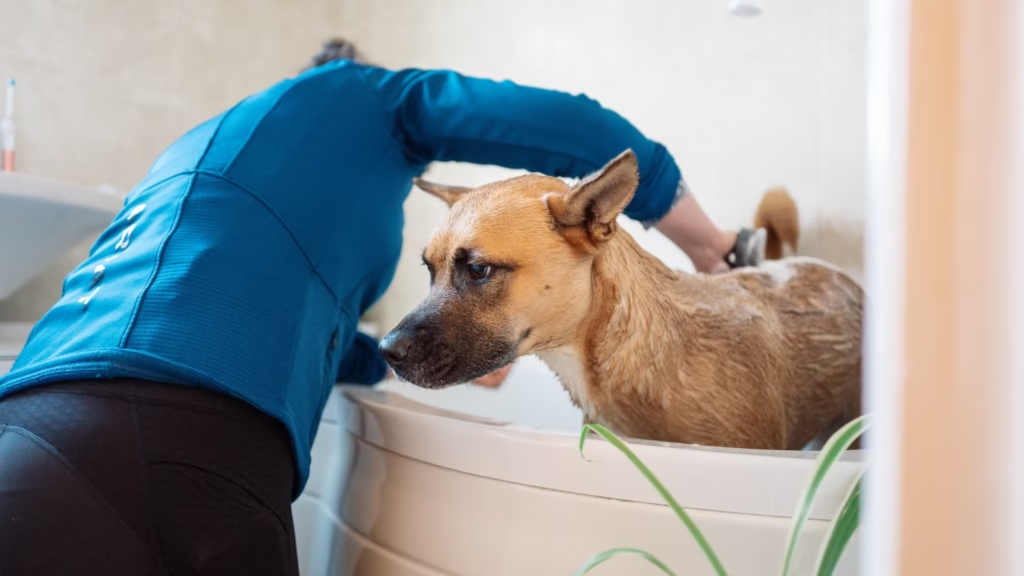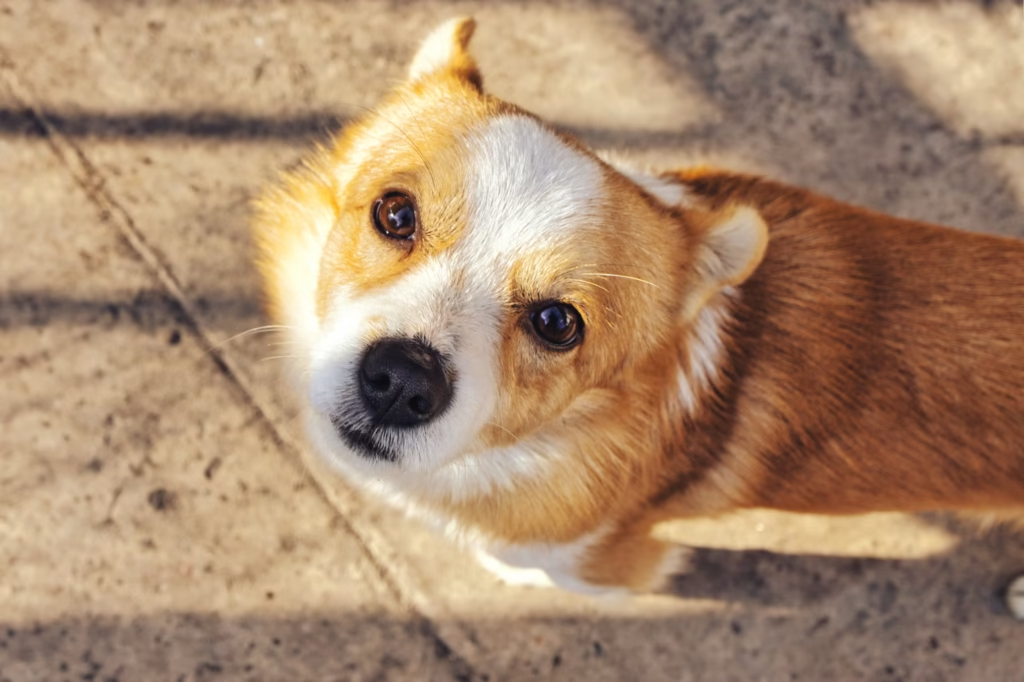Can Dogs Get Hemorrhoids? 🐶 Vet-Approved Answers & Solutions

🔍 Introduction: The “Ruff” Truth About Dog Hemorrhoids
Let’s face it—talking about dog butts isn’t the most glamorous topic. But if your pup is scooting, licking, or showing discomfort near their rear, you might wonder: “Can dogs get hemorrhoids?” 🤔
The short answer? Yes, but it’s rare! Unlike humans, dogs don’t often suffer from true hemorrhoids. Instead, they experience similar-looking issues like anal gland problems, prolapses, or infections.
In this ultra-detailed guide, we’ll uncover:
✅ What hemorrhoids in dogs really look like (with vet insights!)
✅ Common misdiagnoses (Is it really hemorrhoids or something else?)
✅ Symptoms, causes & risk factors 🚨
✅ Home remedies & vet treatments 🏥
✅ Prevention tips (Keep that booty healthy! 🍑)
So, grab a treat for your pup (and maybe a coffee for yourself ☕), and let’s dive into the ultimate guide to doggy derrière health!
Table of Contents
📌 Chapter 1: What Are Hemorrhoids? (And Do Dogs Really Get Them?)
🩺 Vet-Verified Definition
Hemorrhoids (or “piles”) are swollen blood vessels in the rectal area. In humans, they’re often caused by straining, constipation, or pregnancy. But dogs?
🔬 Vet Insight: “True hemorrhoids in dogs are extremely rare because their anatomy differs from humans. What owners often mistake for hemorrhoids are usually anal gland issues, infections, or rectal prolapse.” — Dr. Sarah Wooten, DVM
🐕 Dog vs. Human Hemorrhoids: Key Differences
| Feature | Humans | Dogs |
|---|---|---|
| Common? | Very common | Extremely rare |
| Main Cause | Straining, pregnancy | Usually anal gland issues |
| Symptoms | Itching, bleeding | Scooting, licking, swelling |
| Treatment | Creams, fiber | Vet care, gland expression |
Pro Tip: If you see red, swollen tissue near your dog’s anus, don’t panic! It’s more likely anal gland impaction or prolapse—both treatable with vet care. 🏥
🔍 Chapter 2: Symptoms – Is It Really Hemorrhoids? A Vet’s Breakdown
If your dog is showing unusual butt-related behavior, you’re probably wondering: *”Are these hemorrhoids—or something else?”_ 🧐 Let’s break it down symptom by symptom with vet-approved insights to help you spot the difference!
🚩 7 Signs Your Dog Might Have Hemorrhoids (Or a Similar Issue)
1️⃣ The Classic “Butt Scoot” 🐕💨
- What It Looks Like: Your dog drags their rear across the floor (often in a very dramatic way!).
- Is It Hemorrhoids?
- Maybe, but unlikely! Scooting is far more common with:
- Anal gland impaction (85% of cases)
- Worms (like tapeworms)
- Skin allergies causing itchiness
- Maybe, but unlikely! Scooting is far more common with:
- Pro Tip: Record a video of the behavior to show your vet—it helps with diagnosis! 📹
2️⃣ Excessive Licking or Biting the Rear End 👅
- Why Dogs Do This: Discomfort, pain, or itching.
- Hemorrhoid Link?
- Possible, but more often caused by:
- Anal gland issues (Blocked or infected glands)
- Yeast or bacterial infections
- Food allergies (Leading to skin irritation)
- Possible, but more often caused by:
- Vet’s Advice: “If your dog is obsessively licking their anus, check for redness, swelling, or discharge. These are bigger red flags than hemorrhoids.” — Dr. Karen Becker, DVM
3️⃣ Swollen or Red Anus 🔴
- What to Look For:
- Puffy, inflamed tissue around the rectum
- Possible protruding pink/red lumps (Could be rectal prolapse, not hemorrhoids!)
- Is It Hemorrhoids?
- Rare in dogs! More likely:
- Anal gland abscess (Painful, requires antibiotics)
- Perianal fistula (Common in German Shepherds)
- Tumors (benign or cancerous)
- Rare in dogs! More likely:
- 🚨 Emergency Alert: If the swelling is dark purple/black, rush to the vet—this could mean strangulated tissue!
4️⃣ Straining to Poop (Dyschezia) 💩
- Signs: Whining, prolonged squatting, hard stools.
- Hemorrhoid Connection?
- Straining can cause swollen rectal veins (like in humans), but in dogs, it’s usually:
- Constipation (From dehydration or diet)
- Colon blockage (From bones, toys, or hairballs)
- Pelvic injury (Especially in older dogs)
- Straining can cause swollen rectal veins (like in humans), but in dogs, it’s usually:
- Fix It Fast: Add canned pumpkin (not pie filling!) to meals for fiber.
5️⃣ Blood in Stool or Around Anus 🩸
- Bright red blood? Likely from the rectum or anus (Could be hemorrhoids, but also anal fissures or infections).
- Dark, tarry blood? Indicates internal bleeding (Stomach/intestines)—vet emergency!
- Vet’s Rule of Thumb: “One drop of blood isn’t panic-worthy, but recurrent bleeding needs investigation.”
6️⃣ Foul Odor (Worse Than Usual!) 👃
- Common Causes:
- Impacted anal glands (Smells like rotten fish) 🐟
- Bacterial or yeast infections
- Dead tissue (necrosis) in severe cases
- Not Typically Hemorrhoids: True hemorrhoids don’t usually smell.
7️⃣ Whining or Restlessness When Sitting 🐶😣
- Pain Indicators:
- Shifting weight off the rear
- Sudden yelping when sitting down
- Likely Culprits:
- Anal gland abscess (Extremely painful)
- Spinal issues (Like arthritis or disc disease)
- Trauma (Bite wound or foreign object)
📊 Symptom Checker: Hemorrhoids vs. Common Mimickers
| Symptom | Hemorrhoids? | More Likely Cause | Action Needed |
|---|---|---|---|
| Scooting | ❌ Rare | Anal gland issue | Vet gland expression |
| Red, swollen anus | ⚠️ Possible | Prolapse/infection | Vet exam ASAP |
| Blood in stool | ❌ Unlikely | Parasites, fissures | Fecal test + vet visit |
| Foul smell | ❌ No | Infected glands | Antibiotics needed |
🚑 When to See a Vet IMMEDIATELY
- Tissue protruding from anus (Rectal prolapse)
- Blackened/swollen anus (Sign of necrosis)
- Dog can’t poop at all (Blockage risk!)
- Excessive bleeding or pus
🔬 How Vets Diagnose “Hemorrhoid-Like” Issues
- Physical Exam (Checking for lumps, swelling, gland issues)
- Rectal Palpation (Feeling for masses or strictures)
- Fecal Test (Ruling out parasites)
- Blood Work (If infection or systemic disease is suspected)
- Ultrasound/X-ray (For tumors or blockages)
Pro Tip: Ask for a “anal sac expression + cytology” if glands are the suspect—it reveals infection type!
💡 Key Takeaways for Dog Owners
✅ True hemorrhoids in dogs are rare—anal gland problems are the #1 culprit.
✅ Blood + swelling? Don’t guess—get a vet’s diagnosis.
✅ Prevent issues with high-fiber diets, hydration, and regular gland checks.
📢 Did You Know? Small breeds like Dachshunds and Cocker Spaniels are prone to anal gland issues!
👉 Next Up: Chapter 3: Treatment Options (Home remedies vs. vet care—saving your pup’s comfort!)
🐾 Chapter 3: Treatment – From Home Care to Vet Solutions (Ultimate Guide)

SEO Keywords: “dog hemorrhoid treatment,” “how to treat swollen dog anus,” “dog anal gland home remedy,” “vet solutions for dog hemorrhoids”
Got a pup with a sore behind? Don’t panic! Whether it’s mild irritation or a serious issue, here’s your step-by-step treatment guide—vet-approved and packed with pro tips!
🏡 Section 1: Home Care (For Mild Cases)
1️⃣ Warm Compress Therapy
Best for: Reducing swelling, soothing irritation
How to Do It:
✔ Soak a clean cloth in warm (not hot!) water
✔ Gently press against the anus for 5-10 mins, 2x/day
✔ Dry the area thoroughly (Dampness = Bacteria risk!)
🐶 Pro Tip: Add Epsom salt (1 tbsp per cup of water) for extra anti-inflammatory benefits—but only if your vet approves!
2️⃣ Fiber-Rich Diet Adjustments
Why It Helps: Softens stools → Less straining → Happy booty!
Top Fiber Fixes:
- Canned pumpkin (1 tsp per 10 lbs body weight)
- Psyllium husk (Mix with water, vet-approved dosage)
- High-quality kibble with 4-6% fiber
🚫 Avoid: Dairy, fatty foods, bones (Can worsen constipation!)
3️⃣ Probiotics & Digestive Enzymes
Best Supplements:
- FortiFlora (Vet-recommended probiotic)
- Greek yogurt (Plain, unsweetened – Small amounts!)
Science Says: “70% of a dog’s immune system is in the gut—keeping it healthy prevents anal issues!” — Dr. Judy Morgan, DVM
4️⃣ Sitz Baths (For Extreme Itching/Swelling)
How to Give a Dog a Sitz Bath:
- Fill a shallow tub with warm water (up to belly height)
- Add 1 cup oatmeal (anti-itch) or betadine solution (antiseptic)
- Let your dog soak for 5-10 mins
- Pat dry + apply pet-safe aloe vera gel (No alcohol!)
⚠️ Warning: Never use human hemorrhoid creams (Toxic ingredients like phenylephrine!).
🏥 Section 2: Vet Treatments (For Moderate-Severe Cases)
1️⃣ Anal Gland Expression (The #1 Fix!)
What Happens: Vet manually empties blocked glands (Internal or external method)
Cost: 20−20−50 (Cheaper than complications!)
Signs Your Dog Needs It:
- Fishy odor 🐟
- Scooting every day
- Visible gland swelling
2️⃣ Antibiotics (For Infections)
Common Prescriptions:
- Clavamox (For bacterial infections)
- Metronidazole (For parasites + inflammation)
💊 Pro Tip: Always finish the full course—even if symptoms improve!
3️⃣ Surgery (Last Resort)
When It’s Needed:
- Chronic anal gland issues (Full removal)
- Rectal prolapse (Tissue repositioning)
- Tumors (Biopsy + excision)
Recovery Time: 2-4 weeks (Cone of shame required!)
🌟 Chapter 4: Prevention – Keep That Doggy Booty Happy!

SEO Keywords: “how to prevent dog hemorrhoids,” “dog anal gland care tips,” “best diet for healthy dog digestion”
An ounce of prevention beats a pound of cure! Here’s how to avoid repeat butt dramas:
🍎 Section 1: Diet & Hydration
1️⃣ High-Fiber Foods (The #1 Rule!)
Top Picks:
- Pumpkin (1 tsp/day)
- Steamed green beans (Low-calorie filler)
- Prescription GI diets (Hill’s w/d, Royal Canin Fiber)
2️⃣ Hydration Hacks
✔ Add water to kibble (1/4 cup per meal)
✔ Pet water fountain (Encourages drinking)
✔ Ice cubes as treats (Great for summer!)
🚫 Avoid: Dry, low-quality foods (Linked to constipation!)
🏃 Section 2: Exercise & Gland Health
1️⃣ Daily Walks = Happy Glands
Why It Works: Movement helps natural gland expression during poops!
2️⃣ Breed-Specific Care
At-Risk Breeds:
- Small dogs (Chihuahuas, Pugs)
- Obese dogs (Extra weight = gland pressure)
Special Care: Monthly vet gland checks for prone breeds!
🩺 Section 3: Proactive Vet Care
1️⃣ Regular Anal Gland Checks
- Every 6 months for healthy dogs
- Every 2-3 months for chronic issues
2️⃣ Weight Management
Ideal Weight Tips:
- No table scraps
- Measure meals (No free-feeding!)
- Healthy treats (Carrots > biscuits!)
📋 Prevention Checklist (Printable!)
✅ Monthly: Check for scooting/licking
✅ Quarterly: Vet gland expression (If needed)
✅ Always: High-fiber diet + fresh water
📢 Did You Know? Omega-3 supplements (Fish oil) reduce inflammation in glands!
📢 FAQ – Quick Answers for Concerned Pawrents
Q: Can I use human hemorrhoid cream on my dog?
A: ❌ No! Some ingredients (like lidocaine) are toxic to dogs. Always consult a vet first.
Q: How do I know if it’s hemorrhoids or worms?
A: Worms often cause rice-like segments near the anus, while hemorrhoid-like swelling is usually smooth and red. A vet can confirm!
Q: Are certain breeds more prone to butt issues?
A: Yes! Small breeds (like Chihuahuas) and obese dogs are higher risk.
🎯 Conclusion: A Healthy Butt = A Happy Pup!
Now you know—dogs can technically get hemorrhoids, but it’s uncommon. Most “hemorrhoid-like” symptoms are actually anal gland issues, infections, or prolapses.
🐶 Your Action Plan:
- Monitor symptoms (Scooting? Licking? Swelling?)
- Try gentle home care (Warm compress, fiber)
- Visit the vet if it worsens (Better safe than sorry!)
Got more questions? Drop them below! 👇 And don’t forget to share this guide with fellow dog lovers. 🐾💙
Want to learn more about dog care tips? Click here for expert advice!

nice info, usefull and no jargon